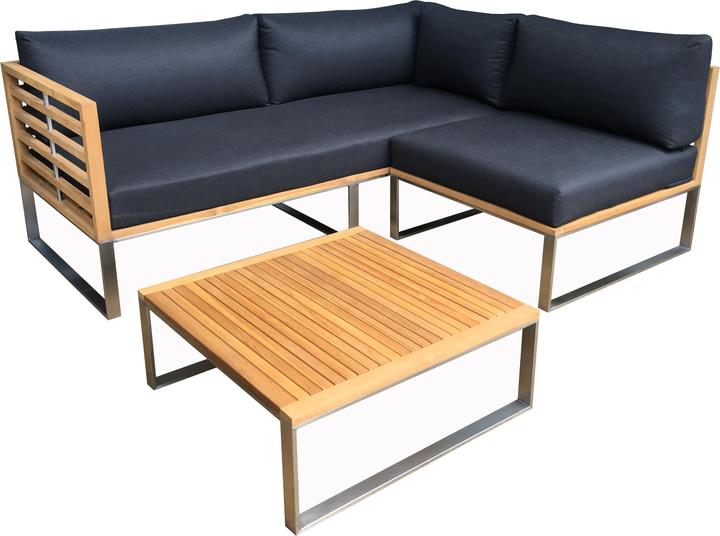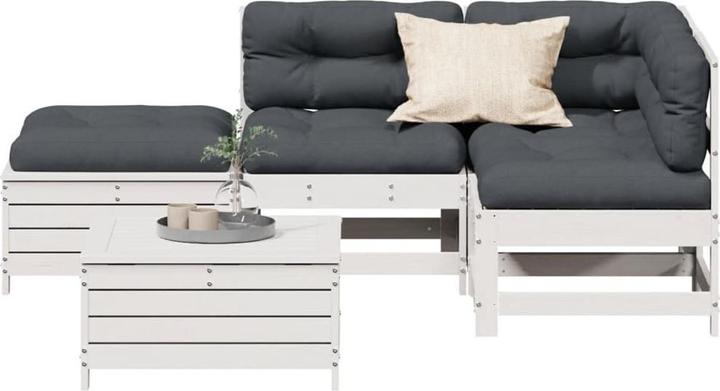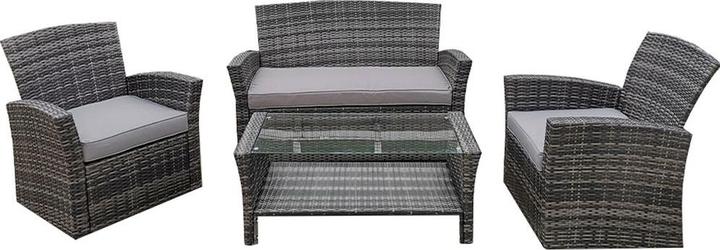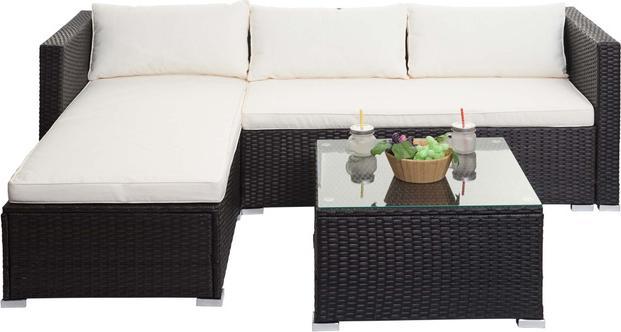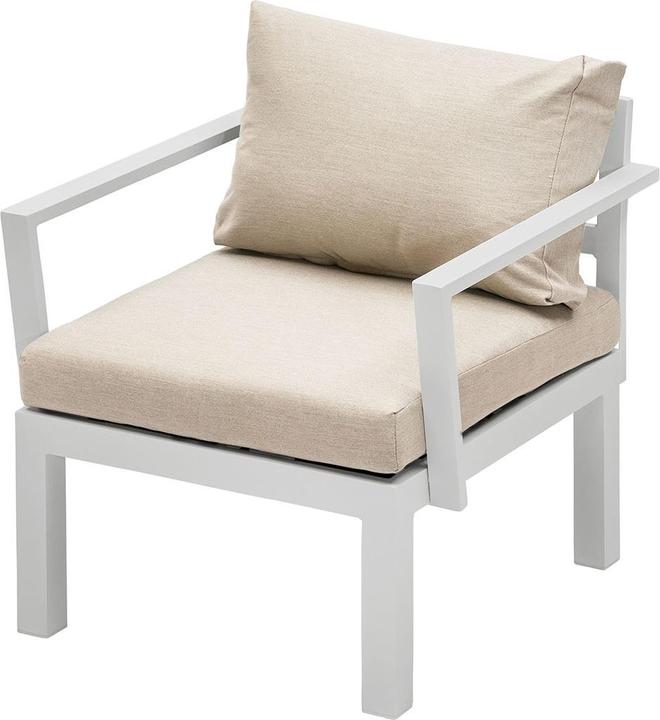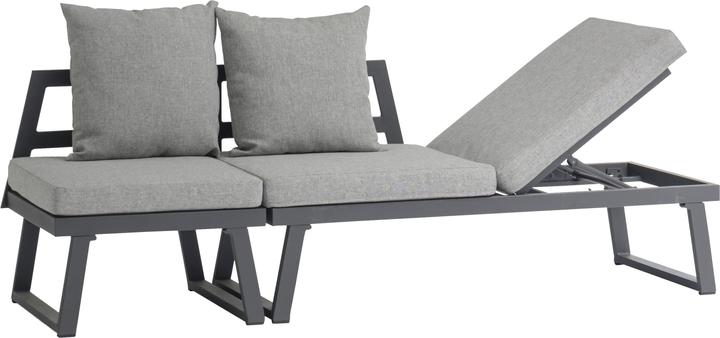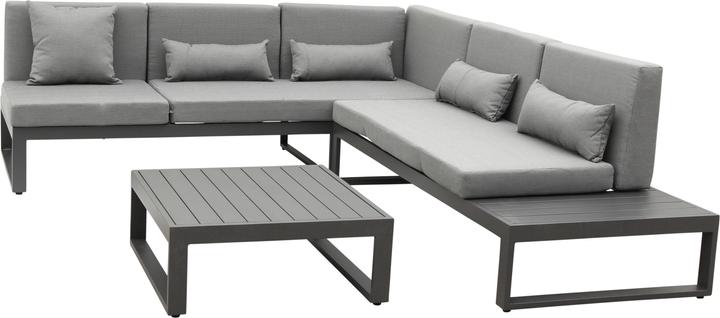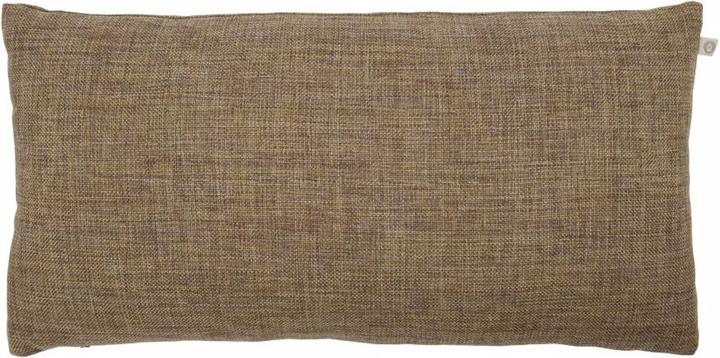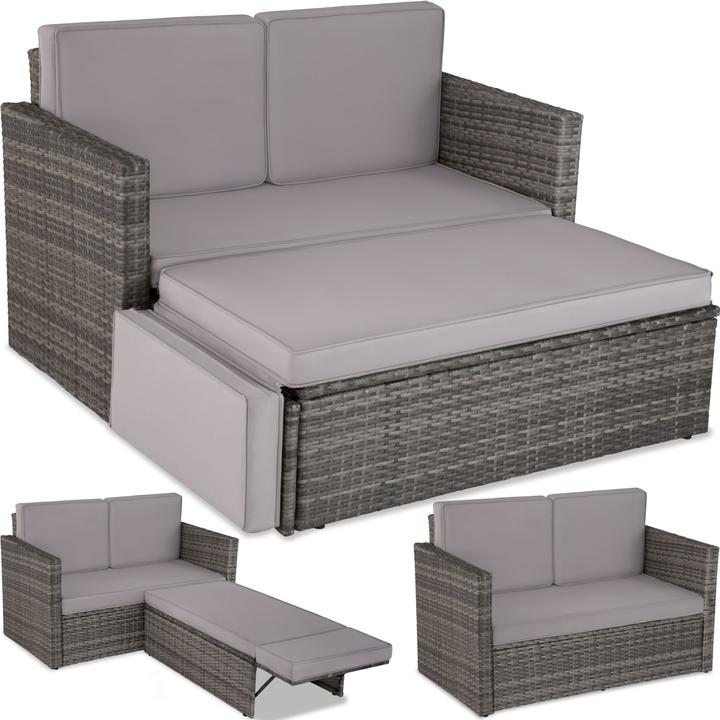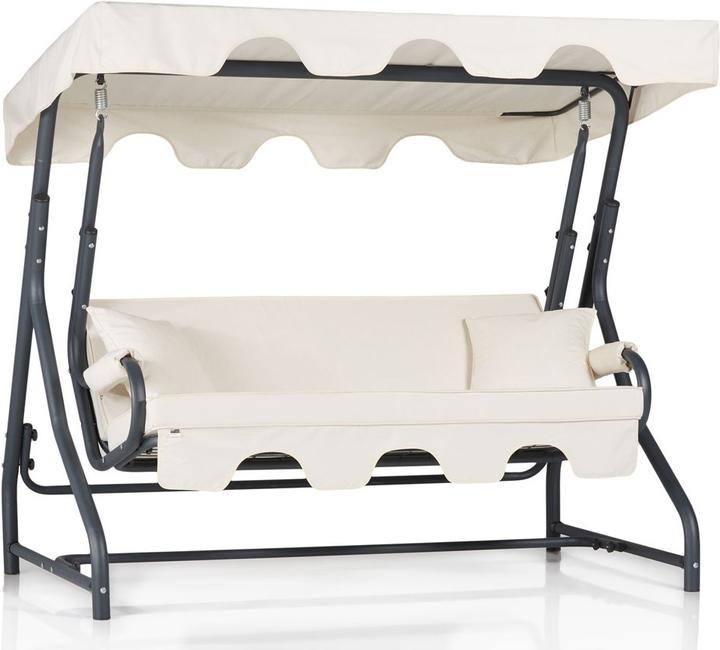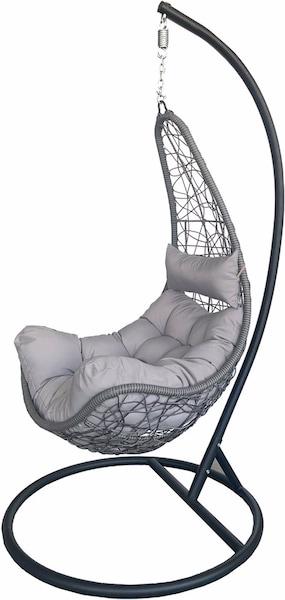

Four things to keep in mind when buying garden lounge furniture
A garden lounge brings the cosiness of your living room outside. But not everything that looks good in advertising photos actually is. Here are a few tips before you buy.
If you’re considering buying a set of lounge furniture, here are a few points you should consider before you add it to your virtual basket. I’ve also included a few interesting pieces from the range as inspiration.
The mercury’s climbing. Warm weather is the green light to bring out garden furniture that was previously hidden under protective covers or gathering dust in the basement. Lounge furniture is an increasingly common fixture on local balconies and terraces, replacing the classic table and chair combination.
1. The right size
Generally speaking, garden lounge furniture takes up more space than an outdoor table with a few chairs. This is partly because chairs can usually be easily pushed under the table when not in use, and some can even be stacked. But each person’s seating area on a chair is smaller than on a sofa or armchair, especially if it’s an L-shape.
And although cushions are part of the comfy vibe of a lounge, they’re also bulky. Very different to a thin cushion on a garden chair.
There’s no clear rule about what size lounge will look good on a balcony or terrace. But obviously furniture that’s too large can quickly make the available space look overcrowded. So, it’s better to choose furniture based on your normal circumstances rather than the one time that 20 people are coming over for a summer party. And remember that other things also need space – whether it’s a barbecue, a cushion storage box or plants.
If you don’t have a lot of space, you can initially choose an armchair and a bench from the same range. If you then realise that there’d be enough space for a second armchair, you can buy another one.

2. The right material
Most garden lounges are made of one of the following materials, or a combination of several. Here’s a quick rundown of their pros and cons.
Wood
Wood is the best-known natural product. If a garden lounge is made of hardwood, for example Douglas fir, teak or oak, you should be able to enjoy using it for a long time. As a rule, the wood is also treated – preservatives are forced into it under pressure – to withstand the effects of the weather. Over time, a silver-grey layer forms on the wood, giving the material a patina look. Important: regular maintenance such as oiling extends the life of wooden garden furniture.
Rattan
If you buy rattan furniture, it’s usually the plastic version, i.e. polyrattan, a polyethylene (PE) wicker material that’s made from petroleum. Polyrattan furniture is light, making it easy to transport. This type of furniture has the lowest risk of you hurting your back when you carry it out of the basement in the spring or back down there in the autumn.
The plastic is also unaffected by rain or even snow. The Kärcher can also be used to clean polyrattan furniture – although maybe not on its highest setting.
Nevertheless, polyrattan also has disadvantages: the material can fade or become brittle in the sun.
Aluminium
Let’s stick with the lightweight options. Like plastic, aluminium is also light and rust-proof, which is important in outdoor areas. Aluminium is usually powder-coated.
If aluminium furniture is placed directly in the sun, it heats up quickly – to the extent where burns are a possibility.
Garden furniture is also made from other metals, usually stainless steel. There’s a risk of rust if they constantly get too wet, but powder coating and galvanising protect against occasional moisture.
3. Desired comfort level
A garden lounge should look good and be comfortable too. I admit that our current seating situation is convincing on the visual front, but I’d give it a grade of «satisfactory» at best when it comes to comfort. The following is what I’ll be paying closer attention to when buying in the future.
Seat cushions
The seat cushions on garden lounge furniture have to withstand a lot. And I don’t just mean the weight of the people sitting on them. The sun shines on them, they get wet when it rains, and residue from cream cakes or chocolate ice cream end up on the fabric.
Manufacturers choose the material for the seat cushions and their interior accordingly: quick-drying, temperature-resistant, stain-resistant and washable – usually a polyurethane foam. Make sure you can wash the cushion covers. Of course, you could also clean everything with the right tool ([read my tip here] (https://www.galaxus.ch/en/page/kaercher-se-3-18-this-battery-powered-wet-vacuum-cleaner-has-won-me-over-29193)); it’ll just take much longer to dry.
I recommend choosing a stronger material for the seat and something softer for the backrest. It makes things so much more comfortable.
Seat depth
I dare say that the seat depth determines how long you sit. A flat seat depth of 50 to 60 centimetres creates an elegant look, but you’ll feel more like you’re sitting on the sofa in a doctor’s waiting room. Seat depths between 60 and 80 centimetres are where the comfort level starts to rise. Most people find this comfortable. A seat depth of 80 to 100 centimetres increases the risk of spending many hours in the chair or on the sofa. This seat depth allows you to stretch your legs or sit with your knees bent with your feet on the cushion. Below are three models with increasing seat depth from left to right:
Backrest
There’s a lot you can get wrong here. Remember that a garden chair has a backrest 40 to 50 centimetres high. Your garden lounge furniture should definitely not be lower when measured from the top of the seat cushion. The rule is: the higher the backrest, the more comfortable the seat. The backrest can be lower if the seat depth is generous, simply because you then slide down and no longer really sit upright.
The backrest cushions should be securely attached to the frame. Few things are as annoying as back cushions that don’t stay in place. Personally, I like garden lounge furniture that has back cushions that clip onto the metal structure like the model below. Velcro straps are only the second-best option.
If you want flexibility and even more comfort, you can look for adjustable backrests, where you can set how far they tilt.
Extra cushions
The more seating space you have available, the more you can boost comfort levels even more with extra cushions. A cushion makes the corner seat of your furniture much more attractive. If an armrest is padded with a pillow, it’s more inviting for a short nap.
4. Multifunctionality
Don’t want to commit to a garden lounge layout? No problem, there’s plenty of flexible furniture that can be reconfigured. A corner setup can become a very long bench as well as a double lounger for two people.
Sliding storage options are also smart. Or seat cushions that can be folded up to turn a sofa into a lounger. There are also benches that can be pulled out like a sofa bed and converted into a daybed.
The design ingenuity here is virtually limitless. With all the options available, you should think about how often you’d actually end up reconfiguring your garden lounge. This is usually less often than you imagine when you’re browsing through the range.
Alternatives
If you’ve reached this point in my article without being converted into a garden lounge fan, I still have something for you. There are still tables and chairs – very comfortable versions. Or you can spruce up your seating area with something like these:
Journalist since 1997. Stopovers in Franconia (or the Franken region), Lake Constance, Obwalden, Nidwalden and Zurich. Father since 2014. Expert in editorial organisation and motivation. Focus on sustainability, home office tools, beautiful things for the home, creative toys and sports equipment.
Practical solutions for everyday problems with technology, household hacks and much more.
Show all